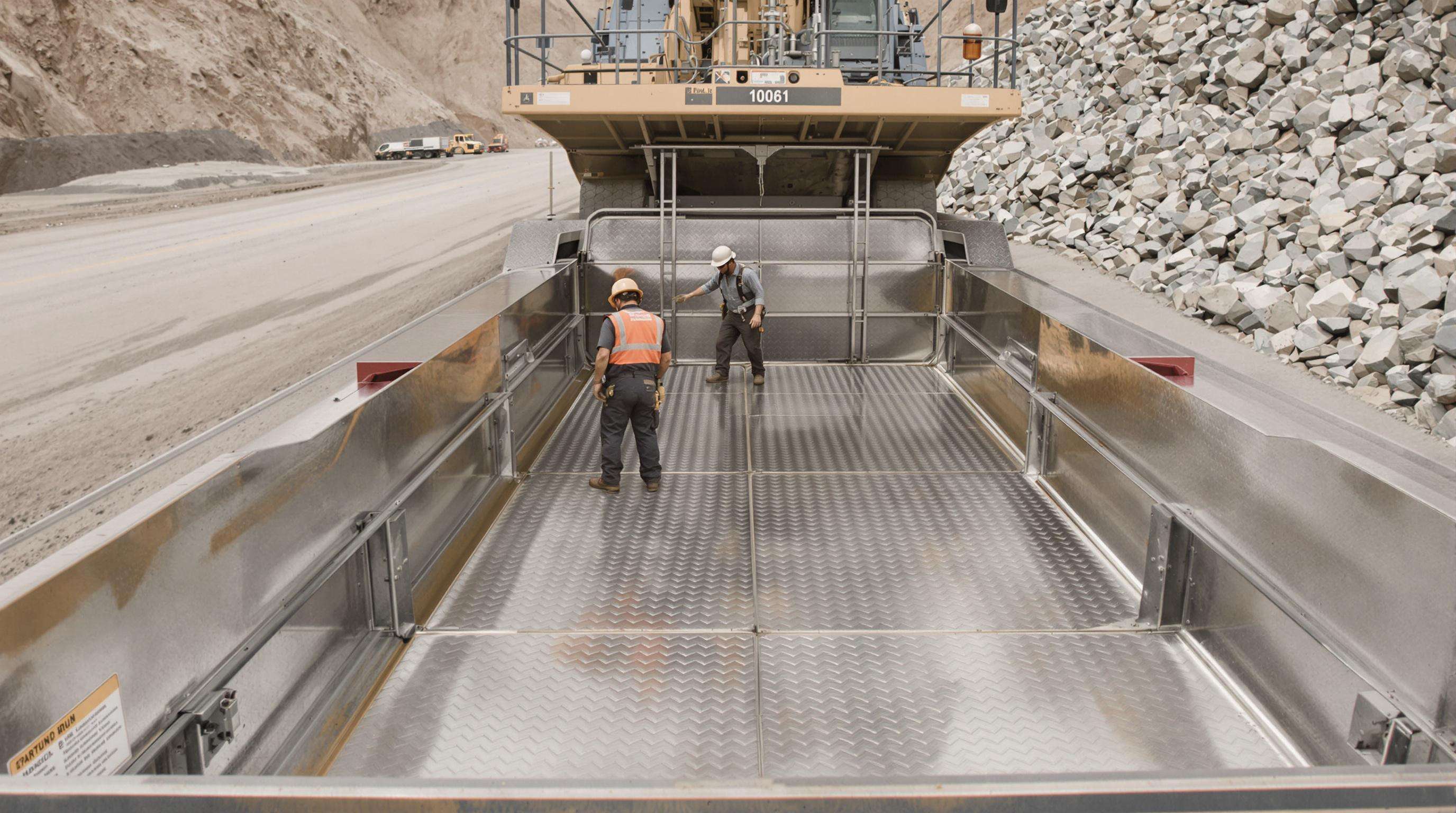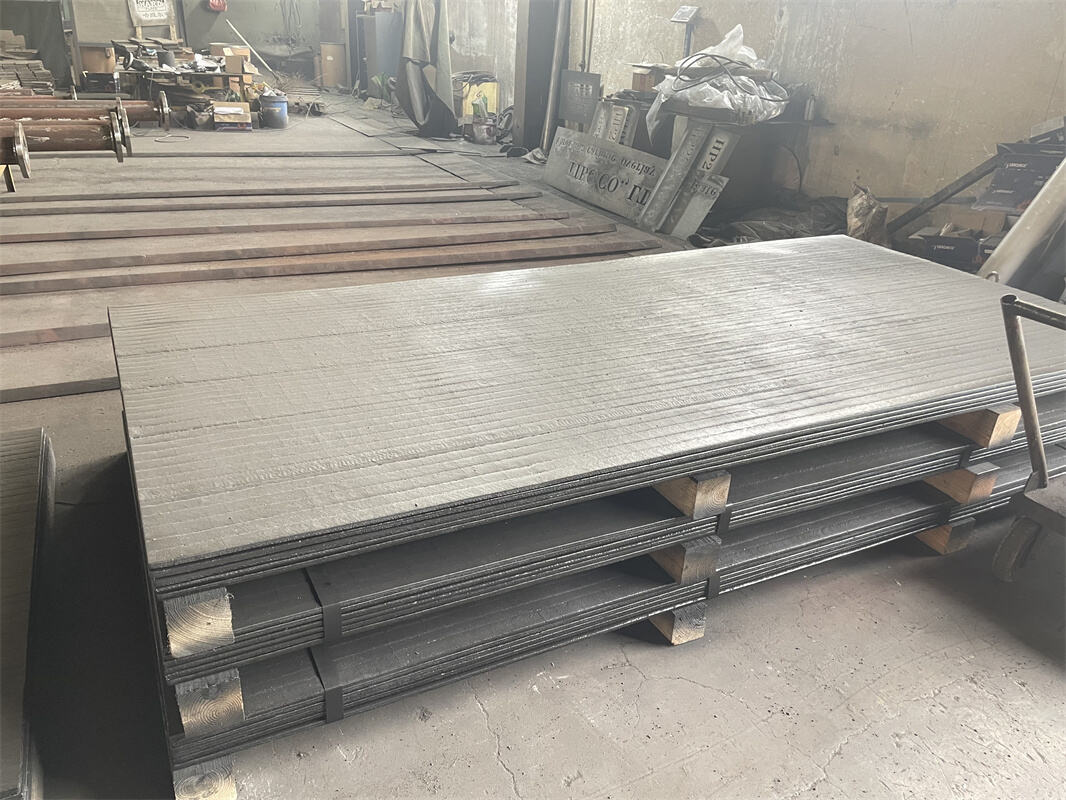How Chrome Carbide Plate Enhances Equipment Longevity

Chrome carbide plate (CCP) systems extend equipment service life through a patented bimetallic design combining a high-chromium carbide alloy overlay (CCO) with a ductile steel base plate. Independent testing shows these plates achieve 2.5× longer service intervals compared to conventional mild steel in abrasive environments.
The Science Behind Chrome Carbide Plate’s Wear Resistance
The overlay’s chromium carbide matrix (25–30% Cr by volume) forms microscopic hexagonal carbides with a hardness of 58–64 HRC. These carbides deflect abrasive particles at optimal 35–65° impact angles, reducing material loss by 83% compared to untreated surfaces (Tribology International, 2022).
Real-World Impact: Case Study in Mining Haul Trucks
A 2023 field study tracked two identical haul truck fleets over 18 months:
| Metric | Standard Liners | CCP Liners | Improvement |
|---|---|---|---|
| Bedliner replacement | 11 cycles | 3 cycles | 73%– |
| Maintenance downtime | 142 hours | 39 hours | 72%– |
The CCP-equipped trucks saved $540K annually in liner costs and labor while increasing payload capacity through reduced dead weight.
Key Mechanisms: Reducing Abrasion and Surface Degradation
Three synergistic effects dominate:
- Impact energy dispersion: Steel substrate absorbs 68% of kinetic energy from +50mm particles
- Wear path optimization: Overlay carbides redirect abrasives along non-destructive trajectories
- Corrosion resistance: 28% chromium content provides pH 3–11 chemical stability
Bonding strength exceeding 350 MPa ensures structural integrity even under 2,500+ PSI particulate loading cycles.
Superior Performance in Abrasive and High-Impact Environments
Chrome Carbide Plate excels where extreme operational conditions rapidly degrade conventional materials. Its unique composition delivers unmatched durability through balanced material science and practical engineering solutions.
Balancing Hardness and Toughness for Optimal Durability
A 2025 aerospace materials analysis reveals components failing under combined abrasion/impact conditions cost industries $740k annually. Chrome carbide achieves resilience through:
- Hyper-hard chromium carbides (60–65 HRC) resisting microscale abrasion
- Ductile steel matrix absorbing kinetic energy during impacts
This duality prevents crack propagation while maintaining surface integrity where brittle ceramics fail and soft alloys deform.
Chrome Carbide Plate vs. Mild Steel: A Comparative Analysis
Field data across mining sectors demonstrates stark performance differences:
| Performance Metric | Chrome Carbide Plate | Mild Steel |
|---|---|---|
| Abrasion Loss (mm/year) | 1.2–2.5 | 15–30 |
| Impact Damage Resistance | 4× higher | Base reference |
| Service Life (months) | 24–36 | 3–5 |
Mild steel requires 5–8× more frequent replacement in conveyor systems and crusher liners, creating hidden costs through production halts and maintenance labor.
Field Performance in Construction, Mining, and Power Generation
Dragline excavator buckets treated with chrome carbide overlays last 7× longer versus hardened steel in iron ore operations. Power plants report 90% reduction in feeder system maintenance after implementing these solutions. The cement industry observes 68% fewer unplanned shutdowns in clinker processing, confirming operational reliability across high-wear zones.
Cost Efficiency and Operational Benefits of Chrome Carbide Plates
Reducing Downtime and Maintenance Costs with Long-Lasting CCO Solutions
Chrome carbide overlay plates can cut down on unexpected downtime in mining conveyor systems by around 40%, since they hold up against about 15 to 20 times more wear and tear than regular steel. Equipment such as coal chutes and crusher liners typically last between three and five years when protected with these plates, whereas older materials often needed replacing every six months or so. Some recent research from 2023 looked at cement plants and discovered that switching to CCO plates for raw material handling reduced yearly maintenance expenses by roughly two thirds across the board.
ROI Analysis: High Initial Cost vs. Long-Term Savings
CCO plates cost about 2 to 3 times what mild steel does initially, but they last so much longer that companies end up saving around 70 to 80 percent over ten years when used in tough environments. Look at mining operations for example trucks equipped with chrome carbide lining typically see their investment back within just 14 months because there's far less need to replace worn parts and spend money on repairs. The savings really add up too power plant operators have shared stories of saving approximately $740,000 per boiler unit across seven years simply by cutting down on downtime caused by wear and tear in fuel systems.
Industry Trends: Rising Adoption Due to Operational Efficiency
The market for CCO plates around the world is expanding pretty fast right now, clocking in at about 7.8% growth year after year. Construction companies and those working in mining are really pushing for ways to cut costs over time, which explains much of this demand. A lot of aggregate producers these days—somewhere north of two thirds—are choosing chrome carbide plates when they design new equipment. They report that components last anywhere from 30 to even 50 percent longer than before. The manufacturers aren't sitting still either. They're coming out with all sorts of new plate designs that hit rock solid hardness levels between 58 and 63 HRC but still manage to stay weldable. This makes them suitable for all kinds of different jobs across various industries where durability matters most.
Critical Quality Factors Affecting Chrome Carbide Plate Performance
Bonding Quality and Base Plate Integration
How well the chromium carbide overlay bonds to the underlying steel really determines how long the component will last in service. If the carbide doesn't get deep enough into the base metal, say less than about 1.5 millimeters, then there's a much higher chance of peeling off when things get stressed out, especially in those tough environments like mining operations where equipment takes constant punishment. Getting that bond right means controlling temperatures just right during the welding process. This creates what we call a transition zone where the strength needs to be at least around 350 megapascals. Without proper fusion between layers, even the best quality hardfacing materials tend to crack and break down first at critical areas such as bucket edges or inside crusher components, which completely defeats the purpose of using these expensive wear-resistant coatings in the first place.
Surface Flatness and Finish for Uniform Wear
Getting the surface shape right is essential for maintaining good wear resistance throughout Chrome Carbide Plate installations. When plates aren't flat enough, say anything over 3mm per meter out of alignment, certain areas just wear down faster in places like conveyor belts or mixing equipment blades, leading to weak spots that break sooner. After manufacturing, grinding the surfaces down to around 3.2 microns roughness makes a big difference in how materials slide over them during transport. Looking at different specs side by side shows why keeping things dimensionally stable really counts for long term performance and reliability in industrial settings.
Avoiding Defects: Inclusions, Voids, and Quality Control Measures
Tiny impurities and air pockets within the carbide matrix act as starting points for dangerous cracks to form. According to industry findings, chromium carbide plates containing over 0.2 percent porosity experience nearly four times more impact failures when used in crushers. Quality certified facilities rely on phased array ultrasonic tests to spot hidden flaws down to 0.3 millimeters in size. They also perform required Rockwell C hardness checks aiming for a rating between 56 and 63 HRC. This helps ensure the carbide content stays consistently above 45 percent throughout the material. Following ISO 9001 quality control procedures means running microstructure analyses before shipping and getting independent verification from third parties. These steps help keep defective materials out of circulation so operations stay safe and reliable.
FAQ
What is the main benefit of using chrome carbide plates in industrial applications?
Chrome carbide plates significantly enhance the wear resistance of equipment, thereby extending service life and reducing maintenance costs in abrasive and high-impact environments.
How does the performance of chrome carbide plates compare to mild steel?
Chrome carbide plates have vastly superior abrasion loss, impact damage resistance, and service life compared to mild steel, leading to reduced replacement frequency and operational downtimes.
What are critical factors in ensuring the quality of chrome carbide plates?
Key quality factors include bonding quality and integration with the base plate, surface flatness, control of inclusions and voids, and adherence to strict manufacturing and quality control standards.
Are there any economic benefits to using chrome carbide plates despite the higher initial cost?
Yes, the long lifespan and reduced maintenance requirements of chrome carbide plates often lead to substantial cost savings over time, often recovering the initial investment within a short period.

